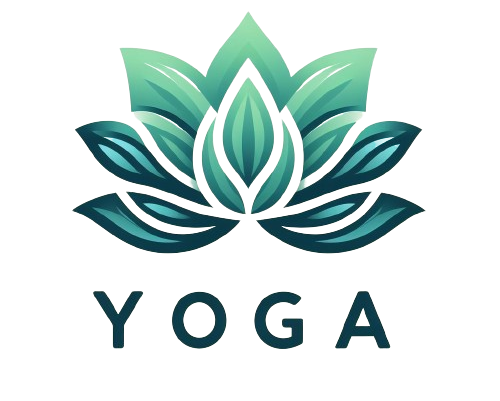Today, we’re diving into something pretty awesome – Yoga Nidra. Now, you might be thinking, “What exactly is Yoga Nidra?” Imagine the most relaxed you’ve ever felt. Got it? Yoga Nidra takes that feeling and amplifies it tenfold. It’s more than just chilling on the couch; it’s a state of consciousness. And the best part? It’s something everyone can explore.
What’s Yoga Nidra Anyway?

Unlike traditional meditation techniques that may require sitting in a specific posture for extended periods, often struggling with the challenge of silencing a bustling mind, Yoga Nidra invites you to simply lie down in a comfortable position. This simplicity, belies the profound depth of the practice. As you enter Yoga Nidra, guided by a skilled instructor’s voice, you embark on a journey that hovers in the liminal space between wakefulness and sleep. This state, known as the hypnagogic state, is where your body finds its deepest level of relaxation while your mind remains in a borderland, lightly tethered to consciousness. It’s in this delicate balance that Yoga Nidra works its magic, offering a sanctuary for deep, restorative relaxation that transcends the physical rest we associate with a good night’s sleep. The guided nature of the practice means participants are led through a series of visualizations, intentions, and breath work, each designed to unlock different layers of the subconscious and nascent parts of the mind, potentially leading to profound insights and benefits. In essence, Yoga Nidra it’s an orchestrated, meditative voyage that nurtures the body, soothes the mind, and can even foster a transformative, healing process within.
The Benefits Are Real
The benefits of Yoga Nidra are multifaceted, impacting both physical health and mental well-being in significant ways. The deep relaxation facilitated by Yoga Nidra goes far providing a temporary sense of calm or a quick escape from the day’s stresses. Instead, it actively works to decrease the body’s stress responses, lowering cortisol levels and promoting a state of restful alertness that combats chronic stress and its many detrimental effects on the body. This reduction in stress can lead to improved heart health, reduced blood pressure, and a stronger immune system, making you overall resilient to physical and mental health challenges.
When it comes to sleep, Yoga Nidra has shown remarkable benefits for those who struggle with insomnia or inconsistent sleep patterns. By guiding the body and mind through a structured relaxation process, it prepares you for deeper, more restorative sleep. Regular practice can significantly improve sleep quality, leading to enhanced energy levels, mood, and cognitive function during waking hours. This is beneficial in our fast-paced world where quality sleep has become a scarce commodity for many.
For individuals facing the challenge of maintaining focus in an age of constant distractions, Yoga Nidra offers a powerful tool. The practice enhances the brain’s ability to concentrate and retain information by fostering a state of relaxed awareness. This heightened focus can translate to improved productivity, creativity, and learning efficiency, revealing Yoga Nidra’s potential tool for relaxation and means to unlock greater potential in various aspects of life.
Yoga Nidra provides an unparalleled space for processing and integrating emotions. In the serene state between wakefulness and sleep, practitioners often find they can observe their thoughts and feelings from a new perspective—detached yet aware. This can lead to insights and a better understanding of emotional patterns and reactions, essentially acting as a reset button for emotional well-being.
Getting Started
So, how do you jump into the world of Yoga Nidra? It’s easier than you might think:
Pick a quiet, comfortable place where you won’t be disturbed. This could be anywhere from your bedroom to a cozy corner in your living room.
Lay down on your back, maybe throw a blanket over yourself if you tend to get chilly. The key is to be as comfortable as possible – think plush pillows, soft mats, and cozy vibes.
There are tons of guided Yoga Nidra sessions available – from apps to YouTube videos. Find a voice and style that works for you.t.
Your Journey Through a Session
Embarking on a Yoga Nidra session is like setting out on a voyage within, a passage that unfolds through several stages, each designed to deepen your meditative state and enhance your self-awareness. It all begins with the important step of intention setting, a moment that calls for you to reflect on a personal aspiration or sankalpa. This intention acts as a guiding star for your practice, imbuing your journey with purpose and direction. By articulating this goal at the outset, you create a framework for your practice, a mental anchor that you will return to, imbued with greater significance after traversing through the depths of relaxation and mindfulness.
The journey continues with the body scan, a systematic process where you’re guided to channel your attention through different regions of your body. This practice encourages a mindful release of physical tension, inviting each part of the body to relax in turn. It’s a process that fosters a deeper connection between mind and body and highlights the interplay between physical relaxation and mental tranquility. As you mentally traverse from head to toe, you’re likely to become aware of how stress and tension melt away, replaced by a soothing wave of relaxation.
Following the body scan, the focus shifts to breath awareness. This stage is about tuning into the natural rhythm of your breathing, observing its flow without trying to change it. This simple act of attention can have a profound effect, serving as a bridge to deeper states of calmness. Through focusing on the breath, you cultivate a sense of presence and stillness, qualities that are often overshadowed by the hustle and bustle of daily life.
Visualizations form the next segment of your Yoga Nidra journey, introducing a dynamic element to your meditation. This could involve picturing tranquil settings, visual metaphors, or even journeying through memories. Such imagery enriches the meditative experience and engages the subconscious in a meaningful way, helping to unlock deeper insights and emotional responses. The power of visualization lies in its ability to transport you beyond the immediate physical environment, deepening your meditation and enhancing its restorative effects.
As the session nears its conclusion, you are gently guided to reconnect with your initial intention. This moment of reconnection serves as a powerful closure, reinforcing the intention with the clarity and calm accrued through the practice. Having journeyed through relaxation, self-awareness, and introspection, your mind is now in an optimal state to reaffirm these intentions, embedding them more deeply into your consciousness.
